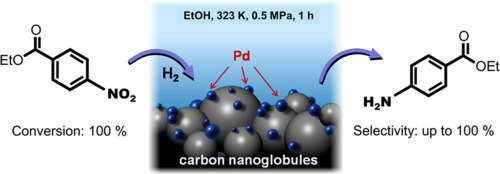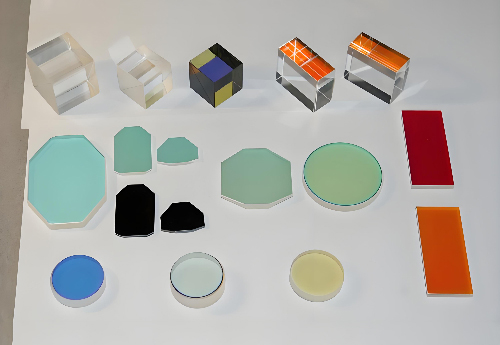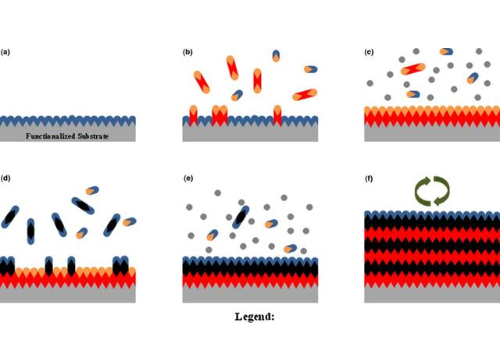GGG vs. SGGG Crystal Substrates: Which is the Superior Choice for Your Tech Needs?
1 Introduction
Gadolinium Gallium Garnet (GGG) and Samarium Gadolinium Gallium Garnet (SGGG) are crystals with a Garnet structure, which have unique optical properties such as nonlinear optics and magneto-optical properties, as well as magnetic and thermal properties. This makes them widely used in optoelectronics, sensors, and magnetism. By and large, due to the introduction of Sm3+, SGGG possesses more intense optical, magnetic, thermal, and electrical properties compared with GGG, but in terms of stability and maturity of development, GGG is still the mainstream at present.
2 The Crystal Structure of GGG and SGGG
Gadolinium Gallium Garnet (GGG) crystals belong to the cubic crystal system, a type of isometric crystal system. The lattice constant is 12.383 Å and the crystallographic unit cell consists of 8 chemical molecular units. As a derivative of the garnet system of crystals, its crystal structure is similar to that of garnet, with Gd2+ and Ga3+ occupying the positively valent ionic positions, respectively, in conjunction with an ortho-octahedron or a tetrahedral framework provided by [GaO4]4-. Similar to garnet, GGG commonly has an ortho-dodecahedral crystallization habit, and deltoidal icositetrahedron is also present.
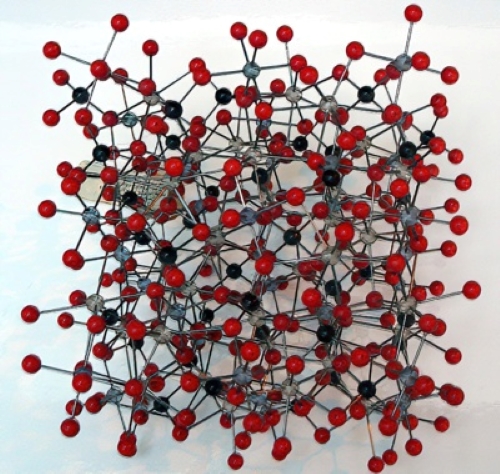
Samarium Gadolinium Gallium Garnet (SGGG) is a crystal obtained by replacing a portion of Ga3+ with Sm3+ doped in GGG, which is similar in appearance and crystal structure to GGG. The ionic radius of Sm3+ is larger compared to Ga3+, which makes the substitution of Ga3+ by Sm3+ at the same position lead to a slight distortion of the crystal structure, and this causes a small change in the crystal structure of SGGG, leading to a partial difference in properties.
3 Optical Properties of GGG and SGGG and Related Applications
3.1 Nonlinear Optical Properties
GGG and SGGG belong to the cubic crystal system, and their crystal structures do not have central symmetry; in the non-centrosymmetric structure, the central inversion symmetry is broken at the same time, which makes the GGG have second-order nonlinear effects, such as Second Harmonic Generation (SHG) and Optical Parametric Oscillation (OPO), etc. Thus, GGG and SGGG have nonlinear optical properties and have important applications in lasers as well as in communication and sensing.
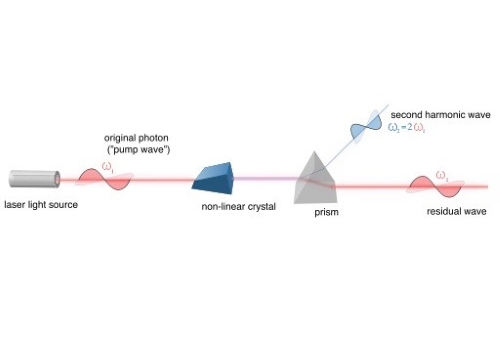
3.1.1 Applications Related to GGG's Nonlinear Optical Properties
Laser Technology: GGG can be used to fabricate Second Harmonic Generation (SHG) and Optical Parametric Oscillator (OPO), which can be used to generate frequency doubling of laser output, frequency mixing and other processes in laser processing, spectral analysis, biomedical imaging, etc.
LIDAR Systems: GGG can also be used to fabricate nonlinear optics in LIDAR systems for modulation, merging and detection of laser beams. LIDAR systems are widely used in remote sensing, geological exploration, aerospace and other fields.
Optical Communication and Sensing: GGG can be used to manufacture devices such as optical modulators and optical switches, which are used to modulate and control the transmission and processing of optical signals to realize high-efficiency and low-loss optical signal transmission. It can also be used to manufacture optical sensors, which are used to detect parameters such as the intensity, frequency, and phase of the optical signals. GGG-based sensors are widely used in the fields of environmental monitoring, medical diagnostics, and industrial control.
3.1.2 Enhanced Nonlinear Optical Properties of SGGG
SGGG crystals are doped with Sm3+ to replace a portion of Ga3+ in GGG crystals, resulting in a slight change in the crystal structure, leading to certain changes in the optical properties. The introduction of Sm3+ adds a nonlinear polarization mechanism, which results in an enhanced nonlinear optical response of SGGGs, which exhibits larger nonlinear optical coefficients in some nonlinear optical applications, as well as a higher conversion efficiency.
This does not mean that SGGG can completely surpass and replace GGG in nonlinear optics applications. Due to the introduction of Sm3+, while bringing higher nonlinear optical coefficients, the change of crystal structure makes the stability of the optical performance of SGGG decrease slightly. The change makes SGGG more sensitive to the environmental conditions in the application scenarios, so when the demand for stability and consistency is high, SGGG is still superior to SGGG. GGG is still a better choice than SGGG when the demand for stability and consistency is high.
3.2 Magneto-Optical Properties
GGG and SGGG have magneto-optical properties. The magneto-optical effect is a phenomenon in which the optical properties of a material are altered under an applied magnetic field. This change can be manifested as a change in the polarization state, refractive index, or absorption of light, etc. The magneto-optical effect of GGG arises mainly due to the interaction of its crystal structure and internal ions, as well as the influence of the applied magnetic field. Under the action of a magnetic field, the spin and orbital motion of ions (usually transition metal ions) in magneto-optical crystals change, leading to changes in optical properties. Under an applied magnetic field, the spins of the ions in magneto-optical crystals interact with photons, resulting in a rotation of the direction of polarization of light. This phenomenon is also known as the Faraday effect.
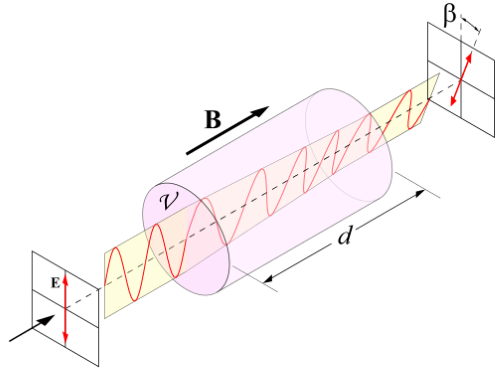
3.2.1 Applications Related to Magneto-optical Effect
Magneto-Optical Storage: The magneto-optical effect of GGG is widely used in magneto-optical storage devices. By utilizing the magneto-optical effect, it is possible to write, read, and erase information in the medium. Magneto-optical storage devices have the advantages of high storage density, high speed and long-term stability, and therefore have important application prospects in the field of data storage.
Optical Devices for Communication and Sensing: GGG and SGGG can also be used to manufacture optical devices such as optical modulators and optical switches. These devices can realize the modulation and control of optical signals, which are used in the fields of optical communication, optical signal processing and optical sensing. Using the magneto-optical effect, modulation and control of optical signals in optical fibers can be achieved for applications such as magnetic field sensing and magnetic field imaging. Magneto-optical fiber optic sensors have the advantages of high sensitivity, fast response speed, and strong anti-interference ability, so they have a wide range of applications in the field of magnetic field measurement and imaging.
Optical Isolators: The magneto-optical effect can also be used to fabricate optical isolators, which are used to prevent reverse propagation and cross-talk of optical signals. Optical isolators play an important role in optical communication and optical devices to improve the stability and performance of the system.
3.2.2 Enhanced Effects in SGGG
Compared with GGG, SGGG will have a more obvious magneto-optical effect due to the doping of Sm3+ and its unpaired electrons as a transition metal ion. And at the same time the corresponding stability and application, the two still have their strengths and complement each other.
3.3 Terahertz Response
Terahertz response refers to the response of a material to the terahertz band (usually defined as an electromagnetic wave located between infrared and microwave, with a frequency range of about 0.1 THz to 10 THz). The terahertz band has many special properties, including high penetration, non-ionization, and unique absorption properties for biological tissues and many materials, etc. The magneto-optical response of GGG and SGGG in the frequency range of 30 G Hz to 1 T Hz, as well as the material response tensor, were investigated by Mohsen Sabbaghi et al. In this spectral range, the materials demonstrate undispersive characteristics and minimal optical signal attenuation. Remarkably, under low-temperature conditions, pronounced terahertz Faraday rotations are observed in the (S)GGG specimens. This notable gyroelectric behavior is probably linked to the elevated spin paramagnetic state exhibited by the Gd3+ ions within the material structure.
3.4 Photoluminescence
Comparative analysis of EPR, optical absorption (OA), and luminescence spectra of GGG single crystals was studied by N. Mironova-Ulmane et al. In crystals irradiated with maximum neutron flux, the EPR spectra showed several paramagnetic defects. In non-irradiated GGG, the photoluminescence is marked by unregulated impurities. However, upon neutron irradiation of GGG, a wide asymmetric luminescence spectrum emerges, with a notable peak ranging from 725 to 733 nm. This peak intensifies proportionally with irradiation fluence. Thus, this spectral band is likely attributable to the emergence of radiation-induced defects within the material.
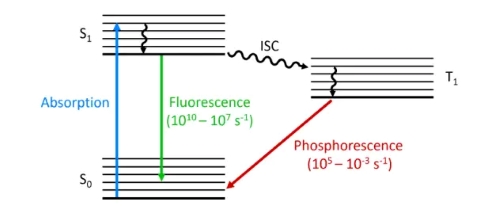
Photoluminescence technology has a wide range of applications in biological as well as chemical analysis (fluorescent labeling, fluorescence spectroscopy, etc.) and optical sensors, in addition to a wide range of luminescent devices such as fluorescent devices, LED lighting, etc. Research into the relevant properties of GGG has led to the possibility of a certain development of its application areas in the future.
4 Magnetic Properties of GGG and SGGG and Related Applications
As mentioned before, GGG and SGGG have magneto-optical properties, and the appearance of magneto-optical properties is based on the magnetization of substances in a magnetic field and the resulting change in optical properties. Therefore, the magnetization property of GGG and SGGG is also an important basis for their wide application. GGG and SGGG exhibit ferromagnetism due to the magnetic moment of Gd3+, which manifests the magnetization phenomenon as well as the magneto-optical effect under an applied magnetic field.
Since the electrons in the outermost layer of Gd3+ are mainly 4f electrons, these electrons have multiple unpaired spin electrons in their atomic orbitals, resulting in gadolinium atoms with high spin angular momentum. These unpaired spin electrons give the gadolinium atoms a large spontaneous magnetic moment at room temperature, thus exhibiting pronounced magnetism. The crystal structure of GGG and SGGG is a cubic crystal system, which belongs to the hexagonal crystal. In this crystal structure, the Gd3+ spin direction is ordered inside the crystal, resulting in the formation of magnetic domains. This ordered arrangement contributes to the formation of macroscopically observable magnetic properties.
In terms of applications, the growth of ferromagnetic garnet films on GGG substrates can be used to fabricate magneto-optical devices and magnetic bubble domain memories. The growth of III-V compound semiconductors on GGG substrates may be used for optical communication systems such as integrated magneto-optical isolators and laser diodes; integrated magneto-optical circuits with integrated emitters, detectors, isolators, circulators, non-intersecting mutual shifters, modulators, etc.; magnetic recordings with integrated magnetic read-heads; and magnetometry, among others.
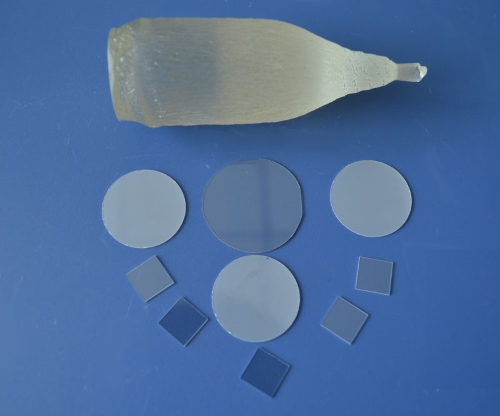
5 Thermal Properties of GGG and SGGG and Related Applications
Synthetic garnet-structured crystals, beyond their established utility in quantum electronics, hold pervasive applications across diverse scientific and technological domains. The imperative to scrutinize the thermophysical characteristics of garnets stems from the indispensable role they play in facilitating precise engineering calculations pivotal for the design and optimization of associated devices. Without a comprehensive understanding of these properties, the efficacy and reliability of such devices remain challenging to ascertain. D A Samoshkin and S V Stankus et al. have investigated new and reliable experimental data on the heat capacity of NGG and GGG in the solid-state temperature range of 300-975 K. The results are compared with existing literature data on the heat capacity of NGG and GGG. The experimental results were compared with existing literature data. For the first time, data were obtained for the 700-975 K temperature interval. Under the same conditions the heat capacity coefficient of GGG rises gradually with the increase of temperature, and the rising trend slows down gradually, showing an increasingly smooth image.
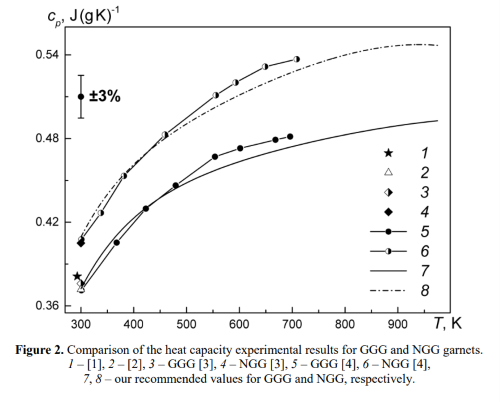
6 Preparation of GGG and SGGG
In the fabrication of GGG and SGGG crystals using the Czochralski method, meticulous control over temperature and lifting rate is paramount.
Temperature Control: Precision temperature management within the melt is pivotal in the Czochralski process. It entails maintaining a temperature distribution that ensures the melting point at the solid-liquid interface while creating a degree of subcooling around the seed crystals. This subcooling prevents the formation of additional nuclei, facilitating the orderly arrangement of atoms or molecules into a single crystal structure. Continuous heat input from the heater is essential to sustain the melt at its requisite temperature, often significantly higher than ambient conditions.
Lifting Rate: The rate at which the crystal is lifted profoundly influences its growth rate and quality. Optimal rotational speed promotes effective mixing within the melt, minimizing radial temperature gradients and preventing excessive component overcooling. Typically, a lifting rate in the range of 6-15mm per hour is employed to achieve desirable crystal growth characteristics.
High-quality coreless GSGG crystals are easy to grow and can avoid impurities, stresses and other defects caused by small surface growth.
GGG single crystals with less than 5 defects/cm 2 caused by iridium inclusions and dislocations were obtained by D. F. O'Kane et al. using a computer-controlled Czochralski crystal growth television system. The pure nitrogen atmosphere in the crystal puller successfully reduced the iridium inclusions in the pulled crystals. During crystal growth, the high rotation rate of the crystals and the slow pulling rate prevented coring; streaks in the crystals could be observed at this high rotation rate. Dislocations are avoided by good crystal diameter control during growth. An etching procedure was developed to reveal dislocations. The lattice parameters of GGG did not change during the 26 hours required for growth. Excess Ga203 in the melt led to only a slight decrease in the lattice parameter, whereas excess Gd203 significantly increased the lattice parameter.
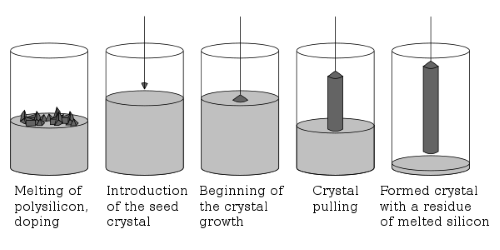
7 Conclusion
Gadolinium Gallium Garnet (GGG) and Samarium Gadolinium Gallium Garnet (SGGG) are crystalline materials renowned for their garnet structure, characterized by remarkable optical, magnetic, and thermal properties. These unique attributes, including nonlinear optics and magneto-optical effects, render them indispensable in various fields such as optoelectronics, sensing technology, and magnetism. While both GGG and SGGG find extensive applications, SGGG, augmented by the incorporation of Samarium (Sm3+), exhibits enhanced optical, magnetic, thermal, and electrical characteristics. However, despite its superior properties, GGG remains the prevailing choice due to its established stability and maturity in development within the current landscape of materials science and engineering.
Related Reading:
Innovations in Optics: The Role of GGG, SGGG, and NGG Garnet Boules
Reference
[1]Mironova-Ulmane N ,Popov A ,Antuzevics A , et al. EPR and optical spectroscopy of neutron-irradiated Gd 3 Ga 5 O 12 single crystals[J]. Nuclear Inst. and Methods in Physics Research, B,2020,480.
[2]Mohsen S ,W. G H ,Michael W , et al. Terahertz response of gadolinium gallium garnet (GGG) and gadolinium scandium gallium garnet (SGGG)[J]. Journal of Applied Physics,2020,127(2).
[3]Samoshkin A D ,A D S ,V S S . Heat capacity of neodymium- and gadolinium-gallium garnets[J]. Journal of Physics: Conference Series,2020,1677(1).
[4]O'Kane F D ,Sadagopan V ,Giess A E , et al. Crystal Growth and Characterization of Gadolinium Gallium Garnet[J]. Journal of The Electrochemical Society,2019,120(9).

